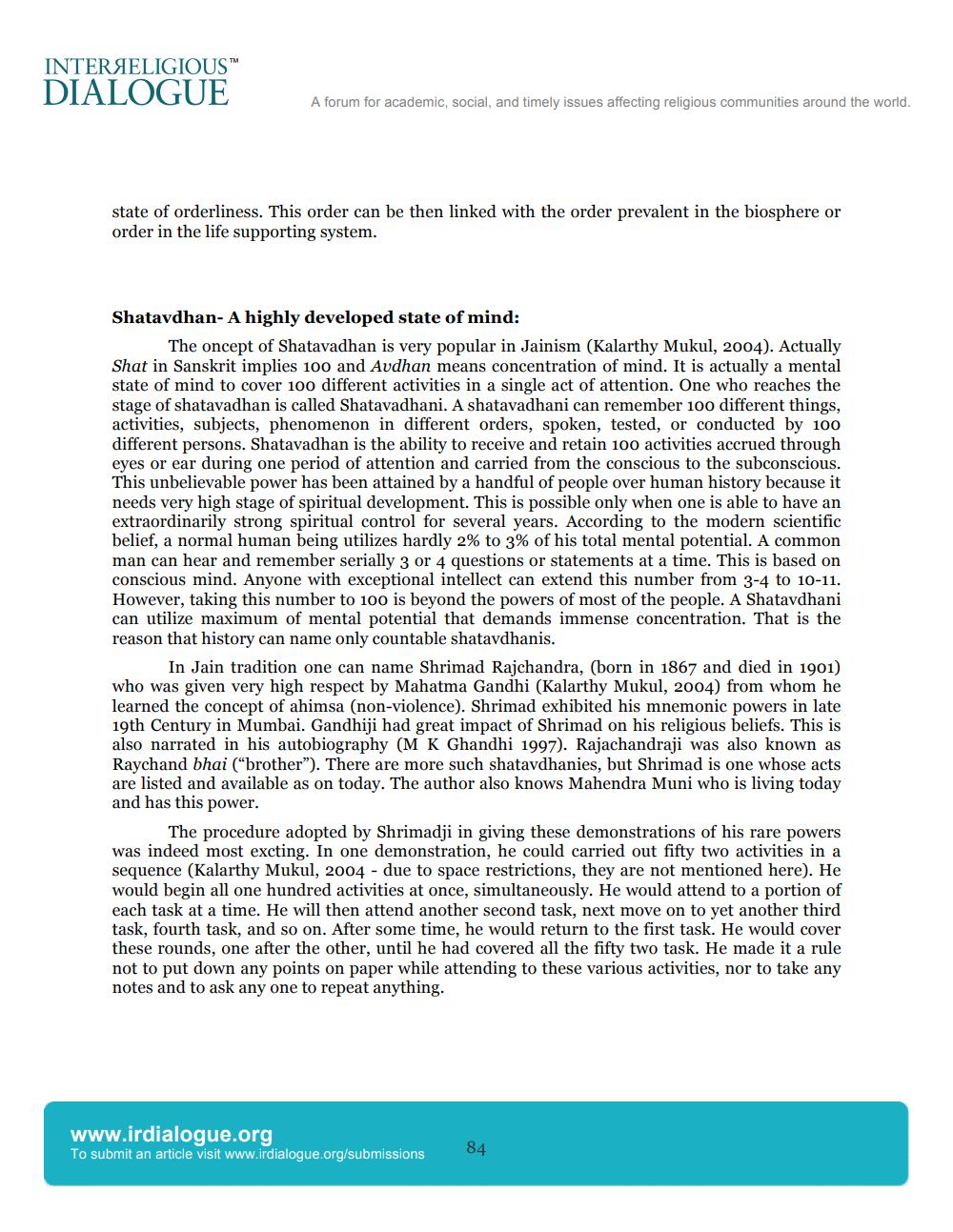________________
INTERJELIGIOUS DIALOGUE
A forum for academic, social, and timely issues affecting religious communities around the world.
state of orderliness. This order can be then linked with the order prevalent in the biosphere or order in the life supporting system.
Shatavdhan- A highly developed state of mind:
The oncept of Shatavadhan is very popular in Jainism (Kalarthy Mukul, 2004). Actually Shat in Sanskrit implies 100 and Avdhan means concentration of mind. It is actually a mental state of mind to cover 100 different activities in a single act of attention. One who reaches the stage of shatavadhan is called Shatavadhani. A shatavadhani can remember 100 different things, activities, subjects, phenomenon in different orders, spoken, tested, or conducted by 100 different persons. Shatavadhan is the ability to receive and retain 100 activities accrued through eyes or ear during one period of attention and carried from the conscious to the subconscious. This unbelievable power has been attained by a handful of people over human history because it needs very high stage of spiritual development. This is possible only when one is able to have an extraordinarily strong spiritual control for several years. According to the modern scientific belief, a normal human being utilizes hardly 2% to 3% of his total mental potential. A common man can hear and remember serially 3 or 4 questions or statements at a time. This is based on conscious mind. Anyone with exceptional intellect can extend this number from 3-4 to 10-11. However, taking this number to 100 is beyond the powers of most of the people. A Shatavdhani can utilize maximum of mental potential that demands immense concentration. That is the reason that history can name only countable shatavdhanis.
In Jain tradition one can name Shrimad Rajchandra, (born in 1867 and died in 1901) who was given very high respect by Mahatma Gandhi (Kalarthy Mukul, 2004) from whom he learned the concept of ahimsa (non-violence). Shrimad exhibited his mnemonic powers in late 19th Century in Mumbai. Gandhiji had great impact of Shrimad on his religious beliefs. This is also narrated in his autobiography (M K Ghandhi 1997). Rajachandraji was also known as Raychand bhai ("brother"). There are more such shatavdhanies, but Shrimad is one whose acts are listed and available as on today. The author also knows Mahendra Muni who is living today and has this power.
The procedure adopted by Shrimadji in giving these demonstrations of his rare powers was indeed most excting. In one demonstration, he could carried out fifty two activities in a sequence (Kalarthy Mukul, 2004 - due to space restrictions, they are not mentioned here). He would begin all one hundred activities at once, simultaneously. He would attend to a portion of each task at a time. He will then attend another second task, next move on to yet another third task, fourth task, and so on. After some time, he would return to the first task. He would cover these rounds, one after the other, until he had covered all the fifty two task. He made it a rule not to put down any points on paper while attending to these various activities, nor to take any notes and to ask any one to repeat anything.
www.irdialogue.org To submit an article visit www.irdialogue.org/submissions
84




